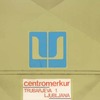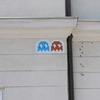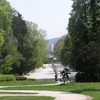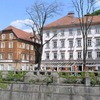Slovenian Gypsies face hostility
The agony of a group of Roma, driven from their homes by a Slovenian mob last month, continued, as new protests flared in order to prevent them from settling in their new homes, local media reported Tuesday.
Around 35 Gypsies, mostly women and children, were forced out of their homes in Ambrus, near the capital Ljubljana, in late October. Villagers harassed them and even torched one of their homes after a false report of a fight between a Roma and Slovenian.
The people were forced to live in the nearby forest for days, though they were intimidated even there.
Interior Minister Dragutin Mate intervened by sending special police to take charge in Ambrus. Authorities eventually provisionally moved the Roma out of harm's way to a home for asylum-seekers some 80 kilometres away.
In a compromise, the embattled group accepted to be moved to a new home. The outcome was sharply criticized as a "dangerous precedent" by the Slovenian ombudsman Matjaz Hanzek.
Nobody has yet been charged with any crime over the attacks and death threats which drove the Roma from Ambrus.
Though details of the plan were kept secret, it was leaked to a TV station Monday that the gypsies would re-settle in Malo Hudo, 30 kilometres south-east of Ljubljana.
Protests flared there immediately, with around 300 locals demonstrating against the plan.
More protests were scheduled for Tuesday in Malo Hudo, as well as a protest of human rights activists in front of parliament in Ljubljana.
The latest incident in Slovenia, which had been criticized in the past over its minority protection record, also drew the attention of the Council of Europe, which is due to discuss it.
In the last census, less than 3,500 Slovenians declared themselves as Roma, though Roma officials claim that there is more than twice as many in the country, but they are unwilling to face discrimination and harassment by admitting their ethnic background.
 Airtrail Slovenia
Airtrail Slovenia





